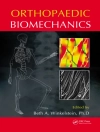This book offers a complete focus on the radiographic analysis of the abdominal wall and hernias. An estimated 20 million hernias are repaired annually throughout the world. As the technology utilized to complete hernia repairs becomes more complex, surgeons are required to have a more thorough understanding of the radiographic anatomy and diagnostic modalities used to evaluate hernias. Furthermore, the amount that now goes into the preoperative planning of hernias for complex repairs (such robotic and open transversus abdominis muscle release procedures) requires an understanding of radiology and the ability to identify nuances of anatomy offered by the imaging. The use of mesh and extent of re-do hernia repairs has also complicated radiographic evaluation of hernias.
The text is a comprehensive review of abdominal wall imaging broken down into individual types of hernia. Each hernia type is discussed with consideration to the best type of imaging evaluation, unique radiographic findings and considerations prior to repair. Representative images, diagrams and videos are used to point out anatomy and features of the hernia. This text offers the first-of-its-kind standardized approach to evaluating hernias radiographically. Most importantly, each hernia and chapter is approached with the surgeon in mind, meaning, authors explain the radiology based on anatomy and with a plan for surgical repair on the horizon. Select chapters include illuminating videos to give context to the text.
This is an ideal guide for practicing surgeons and trainees treating patients with hernias.
Daftar Isi
Computed Tomography (CT) Scan Basics.- Magnetic Resonance Imaging (MRI) Basics.- Ultrasonography Basics.- Standardizing the Approach to Hernia Radiology.- Normal Radiographic Anatomy of Anterior Abdominal Wall.- Normal Anatomy: Computed Tomography Scan.- Normal Anatomy: Ultrasonography.- Normal Anatomy: Magnetic Resonance Imaging.- Hallmarks of Incarcerated and Strangulated Hernias.- 3D Imaging of the Abdominal Wall.- Direct Inguinal Hernia.- Indirect Inguinal Hernia.- Femoral Hernia.- Ventral Hernias.- Subxiphoid Hernia.- Suprapubic Hernias.- Flank Hernia.- Parastomal Hernias.- Hiatal Hernia.- Lumbar Hernia.- Spigelian Hernia.- Umbilical and Epigastric Hernia.- Thoracoabdominal Hernia.- Diaphragmatic Hernia.- Obturator, Perineal, Sciatic, Internal, & Paraduodenal Hernias.- Diastasis Recti.- Athletic Pubalgia.- Imaging Approach to Chronic Postoperative Inguinal Pain.- Therapeutic Ultrasonography: TAP Block and BOTOX, Collections, Nerve Injections.- Radiographic Appearance of Mesh.-Acute and Chronic Post-operative Changes.- Preoperative Planning Utilizing Imaging.- Iatrogenic Abdominal Wall Injuries.- End-Stage Hernia Disease.
Tentang Penulis
Salvatore Docimo, Jr., DO, MBA, MS, FACS, FASMBS
Associate Professor of Surgery Associate
Director, Bariatric & Foregut Fellowship Associate
Program Director for Innovation Department of Surgery
University of South Florida + Tampa General Hospital
Tampa, FL, USA
Jeffrey A. Blatnik, MD, FACS
Division of Minimally Invasive Surgery
Department of Surgery
Washington University School of Medicine in St. Louis
St. Louis, MO, USA
Eric M. Pauli, MD, FACS, FASGE
Division of Minimally Invasive and Bariatric Surgery
Department of Surgery
Penn State Health Milton S. Hershey Medical Center
Hershey, PA, USA












